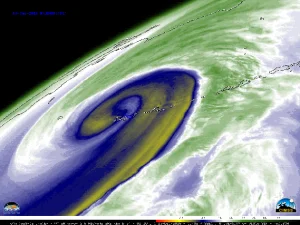
Meteorologists often compare current temperature and precipitation measurements to “normal” values to interpret unusual weather. The weather data observed over the 30-year period between 1991 and 2020 are used to define “normal” or “average” weather. These normals are recalculated every 10 years. The normals are determined on annual, seasonal, monthly, daily and even hourly timescales. The maximum and minimum values also are tracked for each day of the year.
The weather that southern Wisconsin has experienced this October has been different from our normal October weather. Throughout most of October, we experienced very dry conditions. Prior to the storms that occurred on Oct. 30 and 31, the total precipitation across most of the state was less than 50% of the normal precipitation. This lack of precipitation throughout the month was alleviated during the final two days. Many areas in Dane County received over 3 inches of rain on Oct. 30 and 31.
Record warm temperatures were recorded in Madison on October 29: The high was 82 degrees Fahrenheit, tying the record high temperature for that day set in 1937 and making it only the second time we have hit 80 degrees or higher that late in the year. Also, the low temperature of 65 degrees that day set a record warm minimum temperature, breaking the old record of 63 degrees set in 1946. The National Weather Service at Green Bay also set high temperature marks: 82 degrees on Oct. 29 and 80 degrees on October 30 were new records.
The record temperatures were supported by strong winds from the south and southwest moving warm air northward. The lack of precipitation throughout most of the month has contributed to low soil moisture. These dry conditions also support warmer air temperatures.
Steve Ackerman and Jonathan Martin, professors in the UW-Madison department of atmospheric and oceanic sciences, are guests on WHA radio (970 AM) at noon the last Monday of each month. Send them your questions at stevea@ssec.wisc.edu or jemarti1@wisc.edu.





